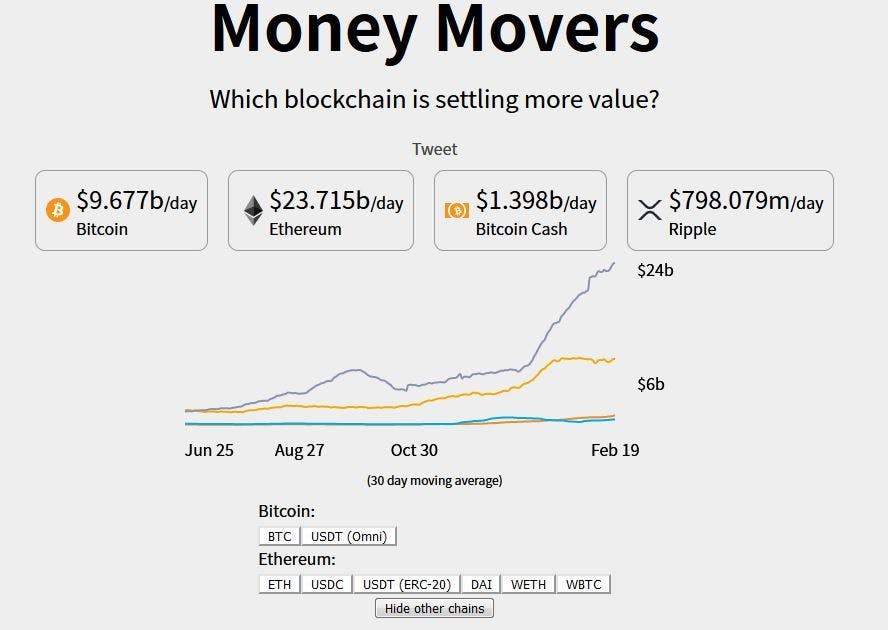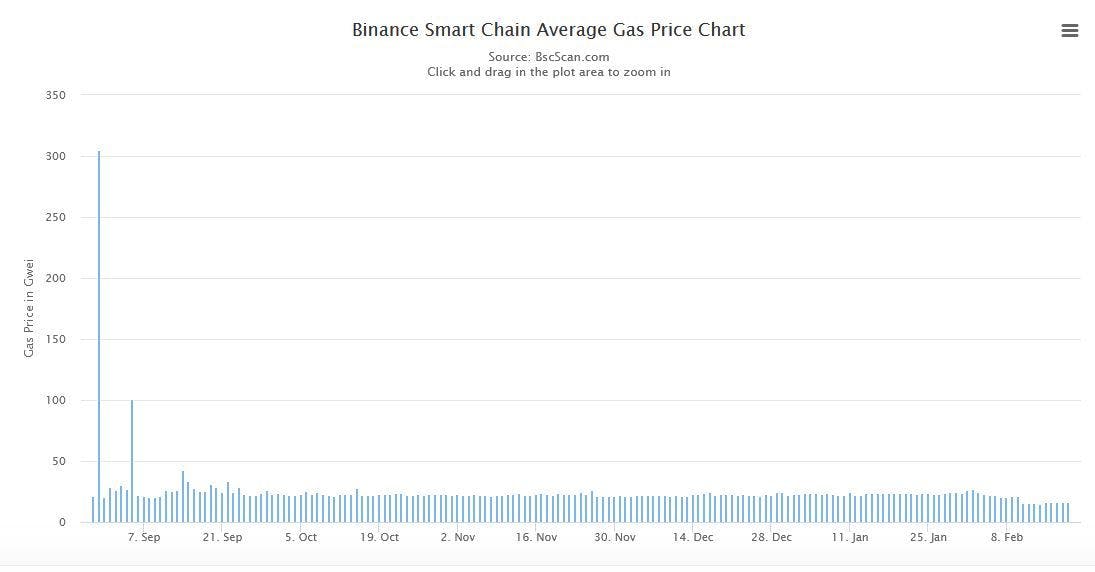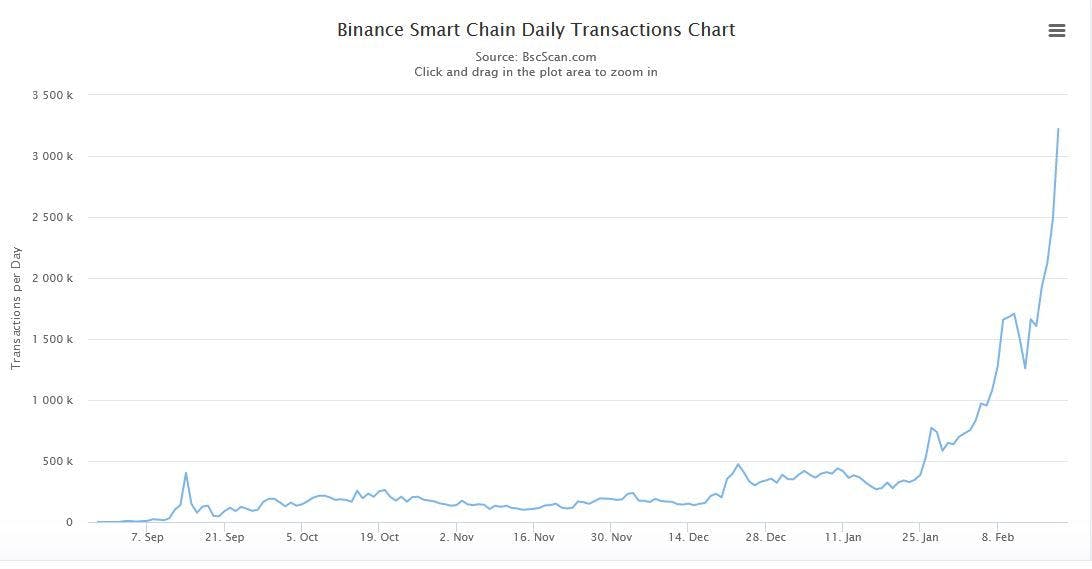Binance Chief Changpeng Zhao surprised the crypto world on Feb 10, when he announced that the Binance Smart Chain has flipped the Ethereum daily transactions count or transactions volume. It was met with both enthusiasm and astonishment from the community. However, doubts are being cast upon the claim and transaction spoofing is suspected.
Then recently, it was claimed again that the BSC now does 3 times the transactions carried out on the Ethereum blockchain. Though, this isn’t apparent on charts detailing the value moving across networks. According to Money Movers website, the Binance’s blockchain doesn’t register in the top 4 blockchains by settled value.
The question arises as to where all these transactions are going, if they aren’t moving much value by themselves. The native token BNB isn’t inflationary and isn’t incentivizing the network by producing new share units and the fees is negligible. Further, the average fees isn’t rising on the BSC chain, something which is largely unheard off in the blockchain technology.

Generally, blockchains have an auction type mechanism, which prioritizes the activity on the network and prevents the network from being spammed with junk transactions. This is exactly how average fees increases with the activity on the network and vice versa. If the network isn’t congested, low fees is a common scenario.

However, heightened activity will quickly change that. Even if the fees doesn’t drastically rise and the network is highly scalable, it is still supposed to respond to the change in network activity by increasing the fees than before.

BSC shows no such correlation, despite claiming to process 3 times the transactions of the Ethereum mainnet. So, how just how scalable is Binance Smart Chain and why doesn’t it act like a normal blockchain?
What Is Binance Smart Chain?
Amidst the bull market, Binance Smart Chain (BSC) has seen meteoric rise lately. An initiative of the world’s largest centralized exchange Binance, the BSC is a fork of the Ethereum blockchain with a Proof of Staked Authority (PoSA) consensus mechanism and seamless compatibility with Ethereum Virtual Machine (EVM).
It relies on 21 validators with the large BNB token holdings, who process transactions on the network. These validators are mostly assumed to be Binance-operated entities, since the BNB token distribution is skewed in favor of the founders/team and validators are approved by the exchange. It’s essentially permissioned and in-arguably centralized.
The high throughout and negligible fees are attained through the same, as fewer nodes can provide immense computational power without getting clogged. Binance returns around 30% of the fees paid to the smart contract deployers to finance continued interest and aligned incentives. The remaining fees generated is returned to the exchange.
Binance Smart Chain And The Ethereum Angle
Binance Smart Chain has gained popularity largely due to the high transaction fees on the Ethereum blockchain, though Layer2 solutions have come online and are in the process of initial onboarding of users or in adoption phase. Due to the fact that the former has negligible fees, the users who can’t afford the Ethereum mainnet fees have shifted over to blockchain.
An Ethereum clone, BSC offers onboarding users with the same Ethereum address that they use on the native blockchain. It also offers a Uniswap clone PancakeSwap, Etherscan clone BscScan, MetaMask compatibility and some DApps that are available on both blockchains. There are a couple of BSC-only projects available, though their numbers are limited.
Large Numbers Of Failed TXs Are Likely Inflating Volume
It’s been pointed out that the astronomical transaction volume and subsequent surpassing of Ethereum chain in that metric might be a result of spoofing through sending a large number of failed transactions, therefore spamming the Binance Smart Chain to inflate volume.
For anyone who thinks the activity on #BSC is actually real, check this out
This one contract alone has had 680k failed transactions spammed to it within the past 17 hourshttps://t.co/JOaTXMpPFY@cz_binance please enlighten me and explain this obviously fabricated activity pic.twitter.com/NjONFbLg64
It’s been suspected that the bots have been employed to attempt to replicate activity. For instance, the contract 0x21Fa8Ca35441E70aD1137fA3C1365C994f2B7C23 has a massive number of failed transactions, continuously piling up. A user estimated that to be ~680,000 in 17 hours.

Now, activity like this on a decentralized exchange Uniswap would incur fees and become prohibitively expensive. However, it is of little operational consequence on BSC with negligible fees and controlled design. As a result, the final numbers appear higher than they really are.

